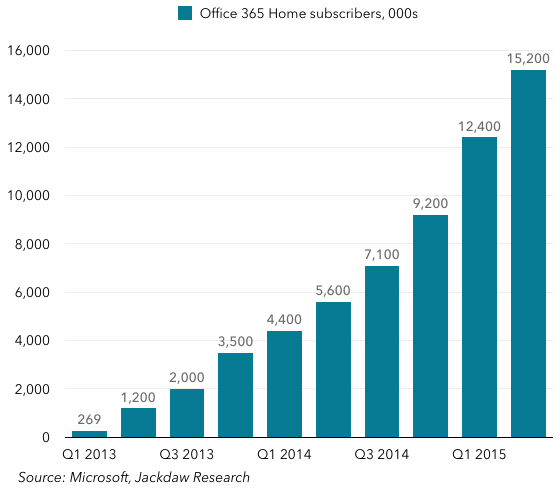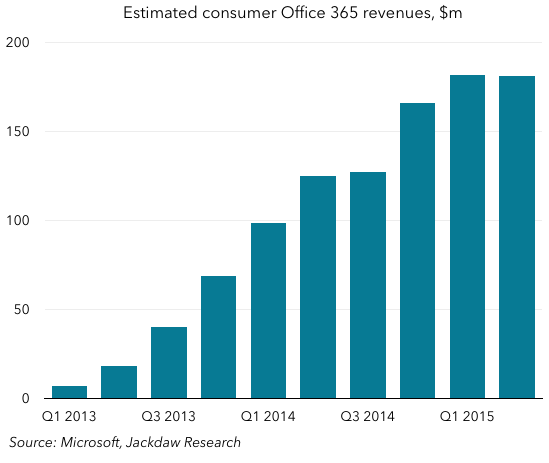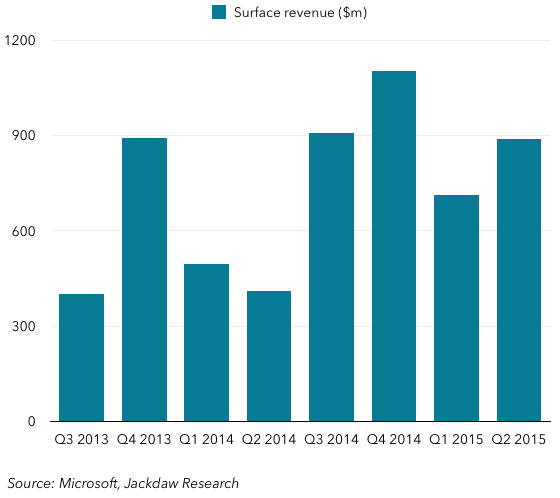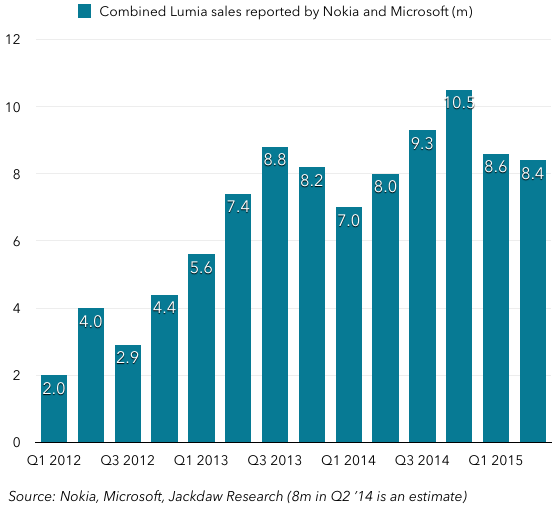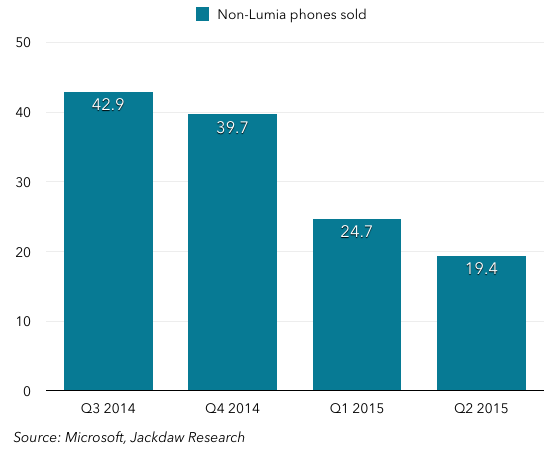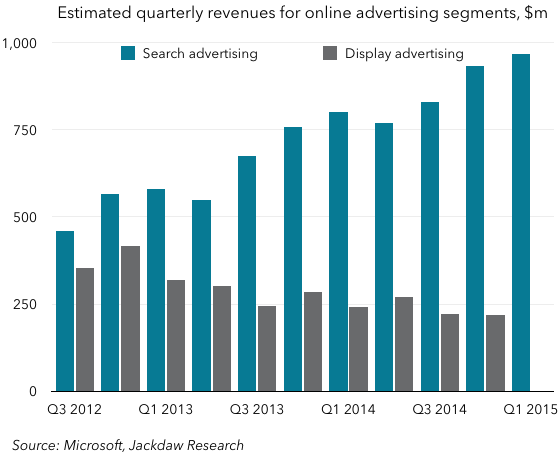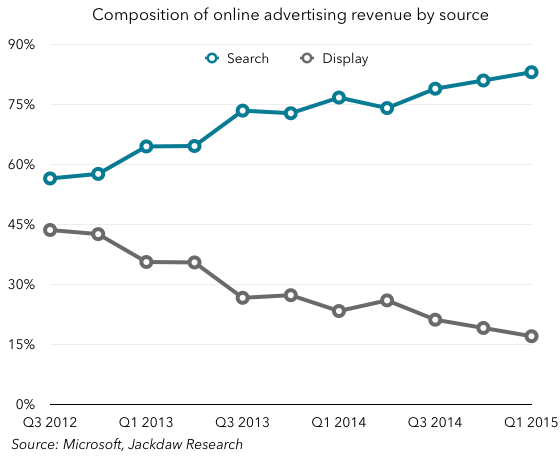Note: this blog is published by Jan Dawson, Founder and Chief Analyst at Jackdaw Research. Jackdaw Research provides research, analysis, and consulting on the consumer technology market, and works with some of the largest consumer technology companies in the world. We offer data sets on the US wireless and pay TV markets, analysis of major players in the industry, and custom consulting work ranging from hour-long phone calls to weeks-long projects. For more on Jackdaw Research and its services, please visit our website. If you want to contact me directly, you’ll find various ways to do so here.
This is one of those rare weeks when two of the tech industry’s major players have back to back events and in the process illustrate their different takes on an important product category, in this case the PC. I’ve already written quite a bit about all this this week:
- My Techpinions Insiders piece on Monday was a scene setter for this week’s events
- A media comment on Microsoft’s event
- My weekly public Techpinions column gave a longer take on Microsoft’s event
- A media comment on Apple’s event.
Now that it’s all done, though, I wanted to pull some of these themes and threads together. I attended today’s Apple event in person and so I’ve spent time with the new MacBooks, though not with Microsoft’s new hardware or software.
Differentiation: from hardware advantages to philosophical approaches
The biggest thing to come out of this week, which I previewed in my Techpinions piece on Monday, was a shift from hardware advantages to philosophical differences as the nexus of competition between Microsoft and Apple in PCs. MacBooks once enjoyed significant hardware advantages over all competing laptops in terms of battery life, portability, and features such as trackpads, but in recent years those advantages have all but disappeared. Instead, what we’re left with is increasingly stark philosophical differences in how these companies approach the market, and this week the focus was on touch.
Microsoft’s computing devices all run some flavor of Windows 10 and feature touch. Apple, on the other hand, continues to draw a distinction between two sets of products by both operating system and interactivity. On the one hand, you have iOS devices with touch interfaces, and on the other macOS devices with more indirect forms of interactivity. Today’s event saw Apple introduce an interesting new wrinkle to touch on the MacBook with the Touch Bar, but it’s clearer than ever that Apple refuses to put touch screens on the Mac and that won’t change soon.
Microsoft’s approach makes touch available everywhere, even when in many cases it doesn’t make sense. It’s optional, though, and Microsoft has pulled back from some of the earlier erroneous over-reliance on touch that characterized Windows 8. Apple, on the other hand, wants to largely preserve existing workflows based on mouse and keyboard interactivity while adding subtle new forms of interaction. It keeps all the interaction on the horizontal plane, while Microsoft has users switching back and forth between the tabletop and display planes. There isn’t necessarily a right and wrong here – both approaches are interesting and reflect each company’s different starting points and perspectives. But it’s differences like this that will characterize the next phase of competition between them.
In some ways, this new phase of competition is analogous to the competition between Apple and Google in the smartphone market. In both cases, there are now devices made by companies other than Apple which match Apple’s core hardware performance. That’s not to say that all devices now come up to Apple’s standards – it continues to compete only at the high end, while both Google and Microsoft’s ecosystems serve the full gamut of needs from cheap and cheerful to high-priced premium. But in smartphones as in PCs, the focus of competition at the high end is now moving to different approaches rather than hardware performance. It’s intriguing, then, that it’s during this era that both Google and Microsoft are finally getting serious about making their own hardware.
The Touch Bar itself is very clever. Apple made the decision to spend a lot of time in today’s event on demos, and I think that was a good use of the time (especially in an event with less ground to cover than most). The demos really showed the utility that the Touch Bar can provide in a variety of Apple and third party apps. What Apple has done here is in essence to take a slice of the screen and put it down within reach to allow you to interact with it. There will definitely be a learning curve involved here – I can see users forgetting that it’s there unless they make an effort to use it, but I can also see it prompting users to try to touch the screen (this happened to me in the demo area). “Touch here but not there” will be an interesting mental model to adapt to, but once users get the hang of it (and developers support it in their apps) I believe it will add real value.
Apple’s price coverage
Of course, MacBooks aren’t the only portable computers Apple makes, and it’s been increasingly making the case that the iPad Pro lineup should be considered computers too. These are Apple’s touch-screen computers, but in most consumers minds they don’t yet belong in the same category as Windows laptops. However, when you put the new MacBooks, older MacBooks, and iPad Pros together, you get an interesting picture in terms of price and performance coverage. The chart below shows base pricing for each of these products:
As you can see, there’s pretty good coverage from $599 all the way through $2399 with just the base prices. If you were to add storage and spec options (and Smart Keyboards in the case of the iPad Pros) the in between price points would be covered pretty well too. But Apple now offers a portable computer at almost any price point in this range, and that’s interesting. The newest MacBooks alone do a nice job of covering the spread from $1199 to $2399 with increasing power and capability, while the older MacBooks fill in some gaps. There’s no denying that these products are premium, but they extend down into price points that many people will be able to reach, while providing really top notch products for those that can afford or justify them. If you focus on those newer devices, I think this is the most coherent and logical MacBook portfolio Apple has had for years.
The next big question is what happens with desktops, because those are now from one to three years old, with no sign of an update. The one that’s had the most focus from Apple in recent years is the iMac, which is both the most mass market and the flashiest – it’s the only one that is highly visible, while both the Mac Pro and Mini could feasibly sit hidden under a desk. I don’t think Apple’s going to discontinue these anytime soon, but the timing of its lack of focus on these devices is providing an interesting window for Microsoft.
A few words on creativity
I won’t repeat everything I said in my earlier stuff on Microsoft’s event here, but suffice it to say that this creativity push is certainly interesting given that timing I just mentioned. However, it’s totally overblown to be talking about Microsoft somehow stealing away Apple’s creative customer base, for several reasons:
- First, Apple has long since expanded beyond that base, especially if you look at the full set of devices including iPhones. Apple clearly isn’t selling hundreds of millions of iPhones solely to people that use Photoshop for a living. Even if you look at Mac buyers, they’re much broader than the cliche of ad agency creatives and video editors.
- Secondly, all Microsoft has done so far is put a stake in the ground. The Surface Studio is a beautiful device and a well thought out machine for a subset of creative professionals. But workflows don’t change overnight just because a new computer comes along, especially if there’s an existing commitment to another ecosystem. The role of this device is to signal to creatives that Microsoft is serious about serving them, which is notable in its own right, but won’t sell millions of devices by itself.
- Thirdly, Microsoft’s bigger creativity push is around software, with 400m plus Windows 10 users getting a bunch of new creativity software in the Creators Update in the spring. This will be much more meaningful in terms of spreading that creativity message far and wide than the new hardware.
- Lastly, even with all this, Microsoft’s efforts to associate its brand with creativity and not just productivity will take years to take hold. Perceptions don’t change overnight either.
Apple’s event today was a nice reminder that it still takes these creative professionals very seriously – both the Adobe and DJ Pro demos were creativity-centric, and these new machines are clearly intended for creative professionals among others (the RAID arrays would be an obvious fit for people editing high-bandwidth video, for example). Apple isn’t going to cede this ground easily, but it will be very interesting to watch over the next few years how this aspect of the competition plays out.
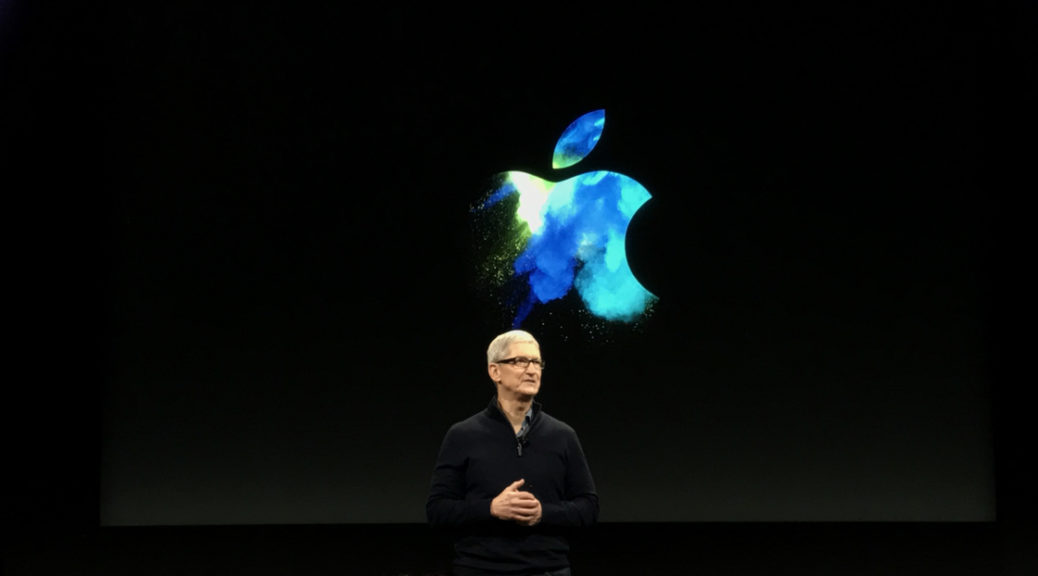

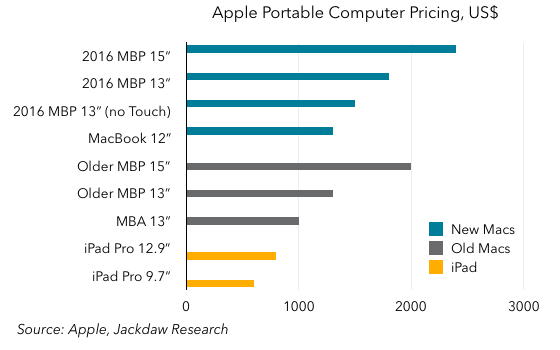

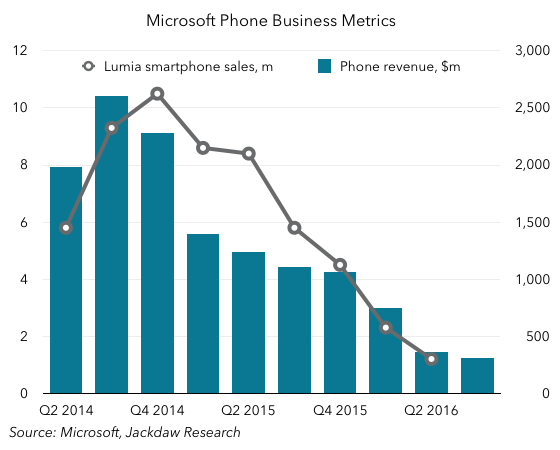
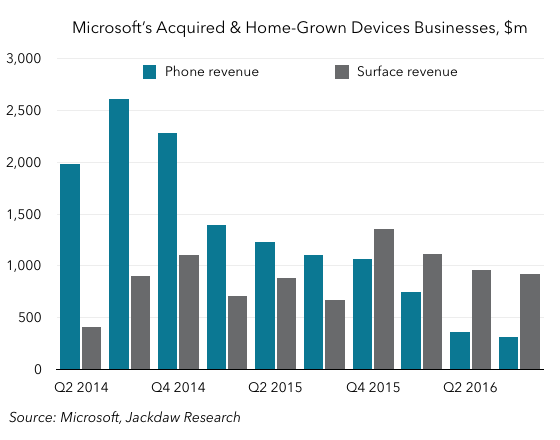
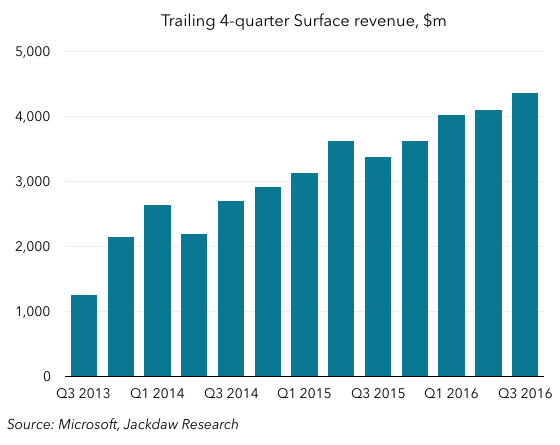
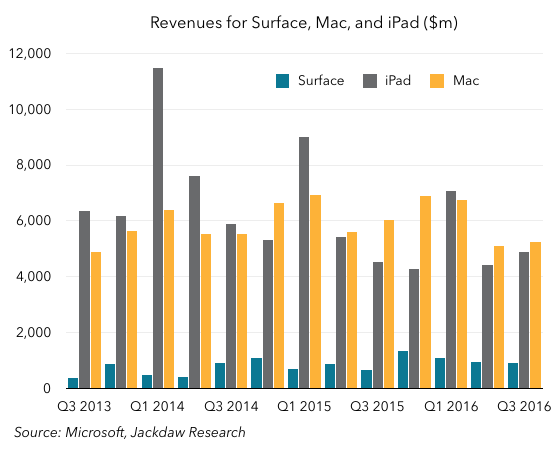

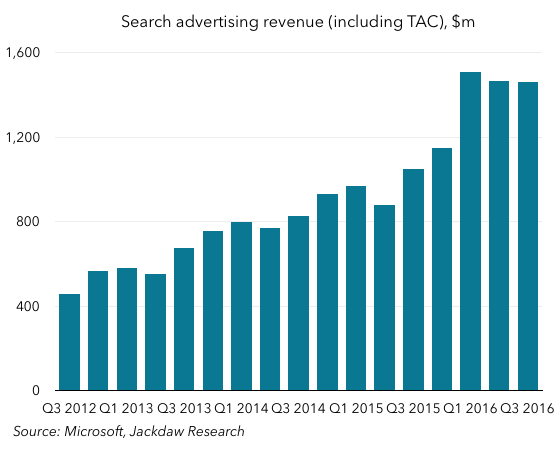
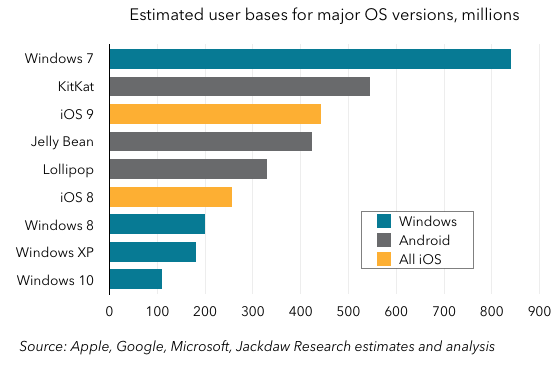
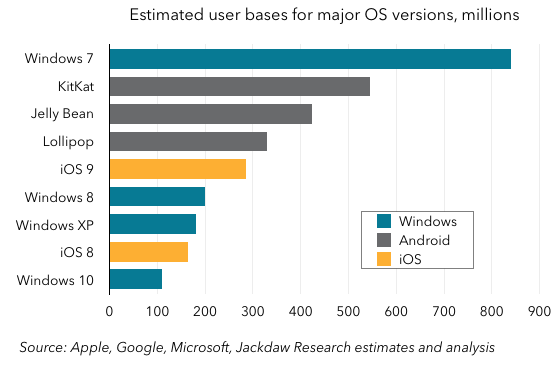
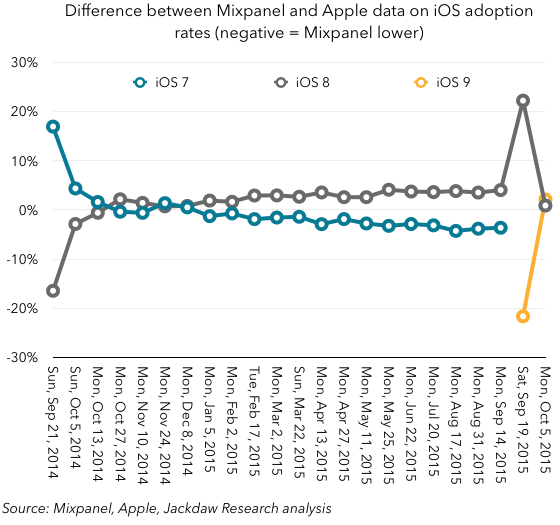
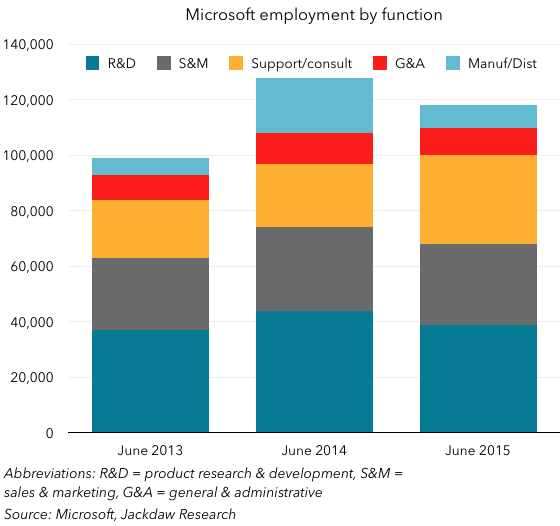
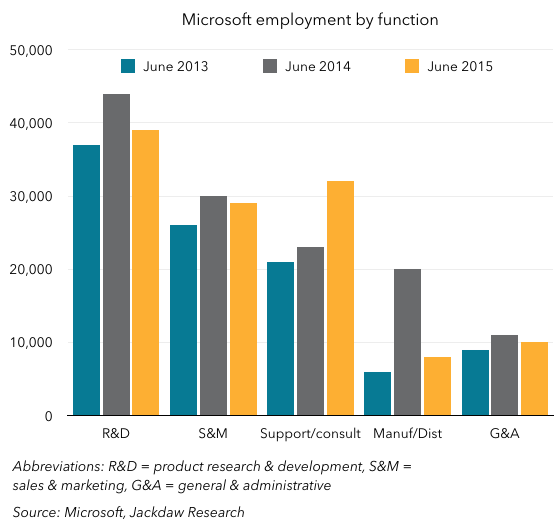
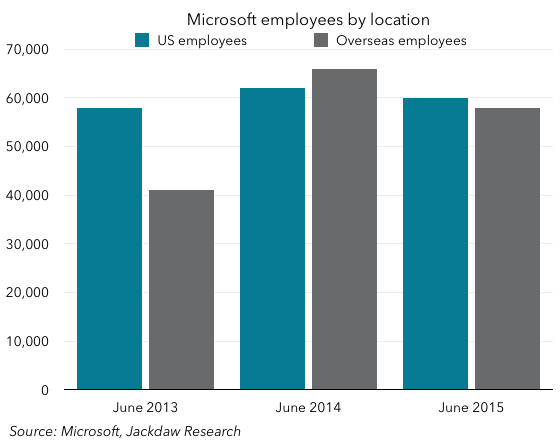
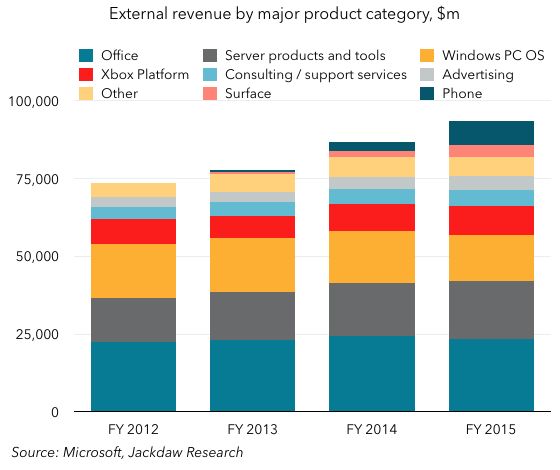
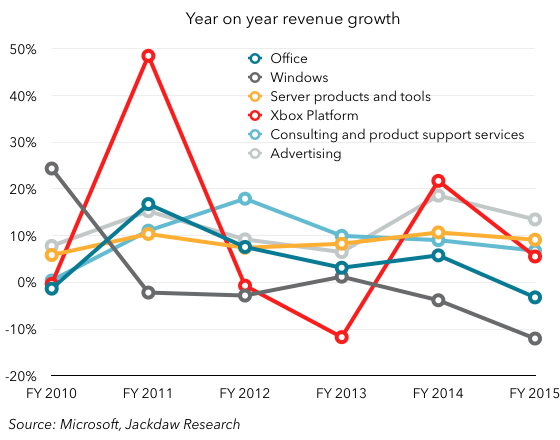
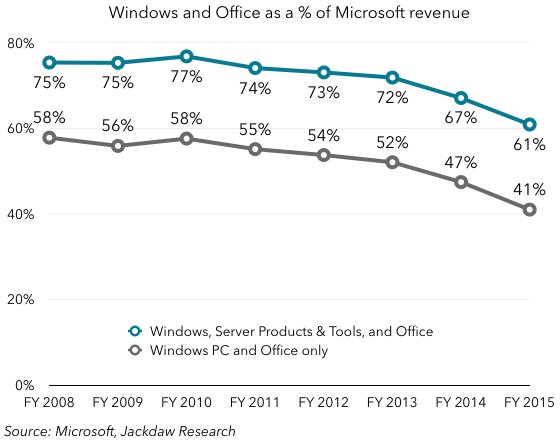

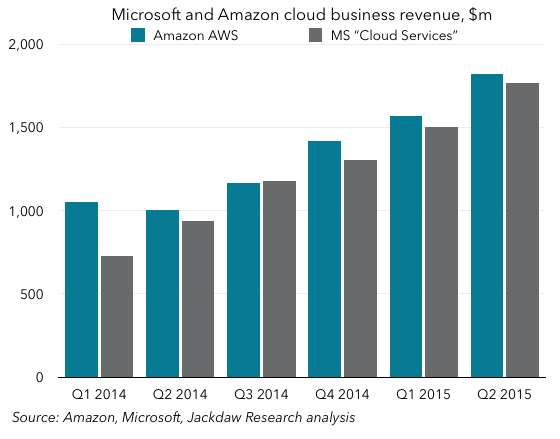
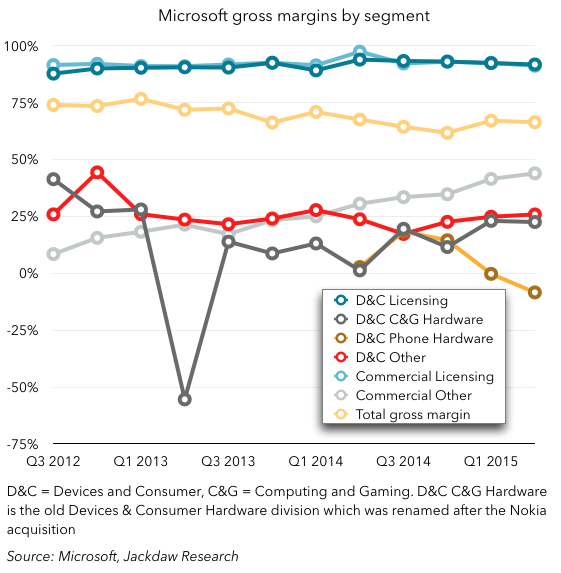 Licensing continues to have the highest gross margin – cost of sales are tiny compared to revenues in that business since the incremental cost of an additional sale is close to zero. But Commercial Other, composed primarily of cloud services and enterprise services, is becoming increasingly profitable, and with its growth is also becoming an increasingly important contributor to overall margins. It’s at around 9% of gross margins now, up from under 2% at the beginning of 2013, and growing fast. Commercial licensing continues to account for the lion’s share of gross margins, at 64.5%, while consumer licensing accounts for 20% or so. Note, however, the margins in the phone hardware business, which were never great to begin with, but have fallen steeply the last two quarters and are now negative. Remember, too, that these are gross margins, so operating margins in this business are likely substantially lower still. Computer and gaming hardware (Xbox, Surface, and a few other things) is becoming increasingly profitable at a gross margin level, however, helping to justify the continued investment in two products many people consider non-core to Microsoft’s business.
Licensing continues to have the highest gross margin – cost of sales are tiny compared to revenues in that business since the incremental cost of an additional sale is close to zero. But Commercial Other, composed primarily of cloud services and enterprise services, is becoming increasingly profitable, and with its growth is also becoming an increasingly important contributor to overall margins. It’s at around 9% of gross margins now, up from under 2% at the beginning of 2013, and growing fast. Commercial licensing continues to account for the lion’s share of gross margins, at 64.5%, while consumer licensing accounts for 20% or so. Note, however, the margins in the phone hardware business, which were never great to begin with, but have fallen steeply the last two quarters and are now negative. Remember, too, that these are gross margins, so operating margins in this business are likely substantially lower still. Computer and gaming hardware (Xbox, Surface, and a few other things) is becoming increasingly profitable at a gross margin level, however, helping to justify the continued investment in two products many people consider non-core to Microsoft’s business.